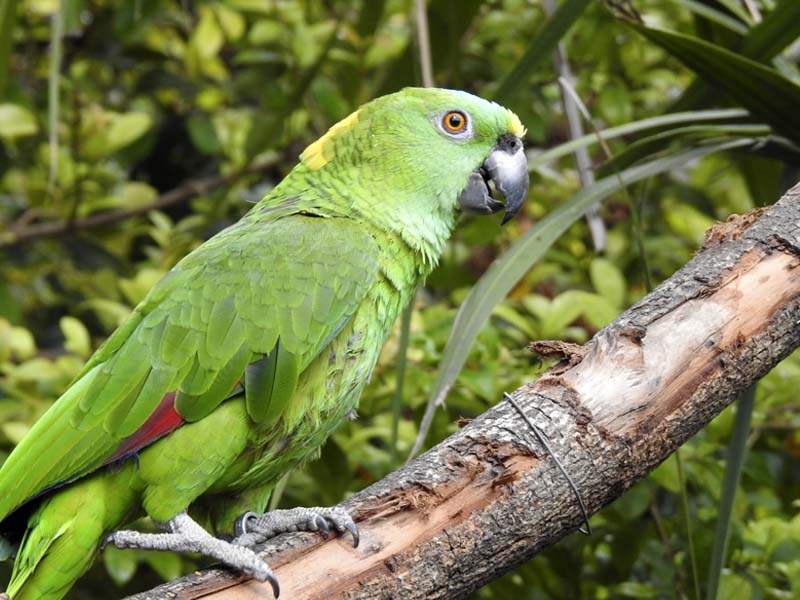In addition to its characteristic yellow colouration on the nape of the neck and forehead, this critically endangered species has blue and red wingtips, visible when in flight, and a yellowish-red stripe at the base of the tail, normally covered when the bird is at rest. Its eyes are amber with a grey ring. There is no sexual dimorphism, i.e. there are no notable physical differences between the two sexes, although there are differences in the colouring of its plumage and iris of the eye depending on its age.
It is highly endangered throughout its habitat distribution, mainly due to the deforestation of the areas it inhabits and their conversion to cultivated fields, as well as poaching and the pet trade. The species has lost over 92% of its wild population in the last three generations and has an estimated population of only 1,000 to 2,500 free-ranging adults according to the most recent studies, which are facing a steady decline in numbers.
Distributed in Mexico and Central America, this species inhabits savannahs as well as semi-arid and mangrove forests, gallery forests and leafy areas, where it finds its food, similar to that of other species of tropical parrots on the American continent: nuts, berries, seeds or futas. It is a sociable animal, forming large flocks of several hundred that gather at nightfall, while they work in small groups of less than fifteen individuals during the day. During the breeding season, in the dry season, the female nests in hollow spaces in logs. They have a great capacity for learning and transmission, with a large number of different vocalisations, which are taught among the different members of the group, and the ability to imitate the human voice.















